Be sure to set your alarm for early Wednesday morning, as the Moon occults the King of Planets.
If you watch the sky long enough, even the most improbable events are bound to coincide. Just such a strange occurrence happens this Wednesday morning, when the Moon occults (passes in front of) Jupiter as seen from our Earthly vantage point… with a bizarre telescopic twist.
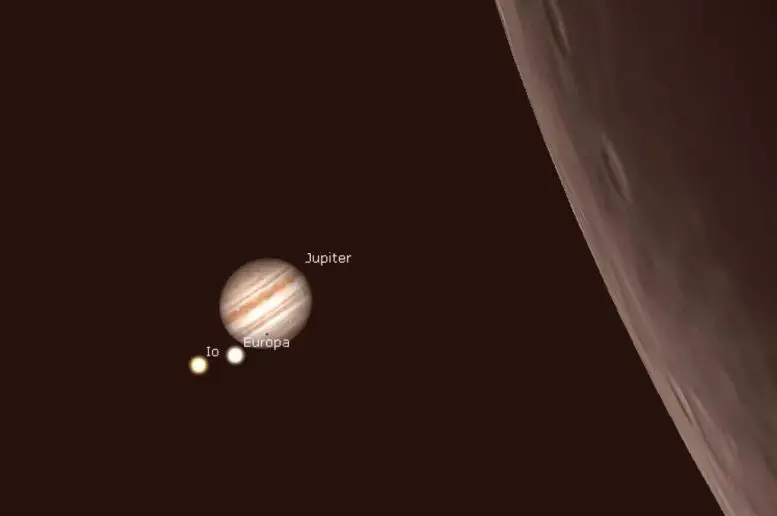
Wednesday’s occultation, as Jupiter approaches the Moon. Credit: Stellarium
The occultation is the last of four for Jupiter in 2023, and favors western North America at dawn. The Moon is an old waning crescent just 5% illuminated, while -2nd magnitude Jupiter is 34” across. Both are 26 degrees from the Sun on the morning of May 17th.
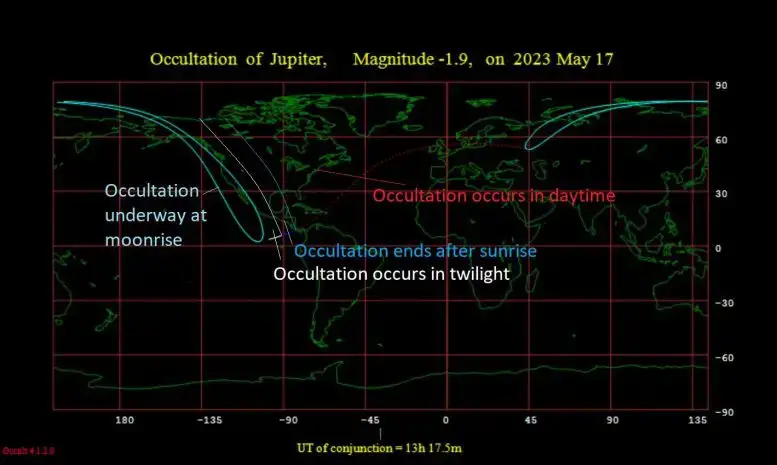
A map of the visibility footprint for Wednesday morning’s occultation. Credit: Occult 4.2
A line across western North America running from the Pacific coast of Mexico, up through Arizona and Nevada, and across western British Columbia has the best seat in the house, as the occultation transpires low to the east at dawn before sunrise. East of the Rockies, expect to see the event occur after sunrise, though the two will still make a pretty pair at dawn.
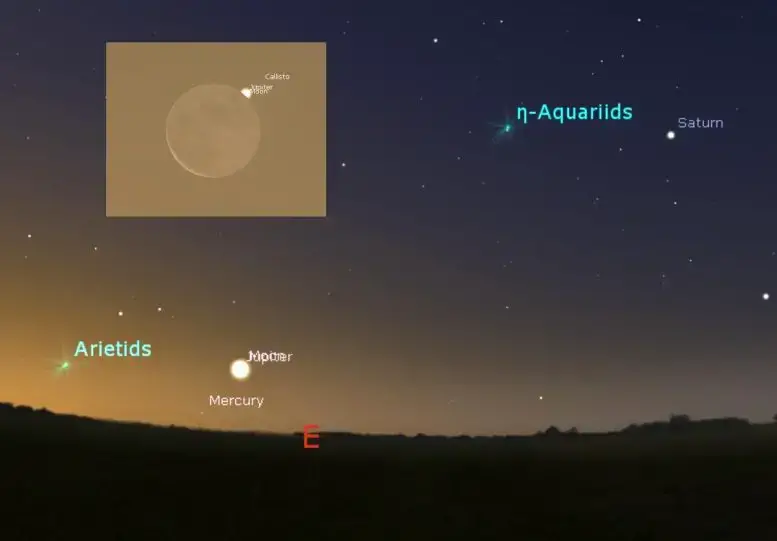
The view from Flagstaff, Arizona on the morning of May 17th. Credit: Stellarium
If skies are clear, Jupiter will make a good binocular or telescopic target in the daytime sky, hanging right on the limb of the Moon. Your best bet is to acquire the pair before sunrise and simply track them up into the daytime sky… though be sure to physically block the blinding Sun from view behind a house or hill.
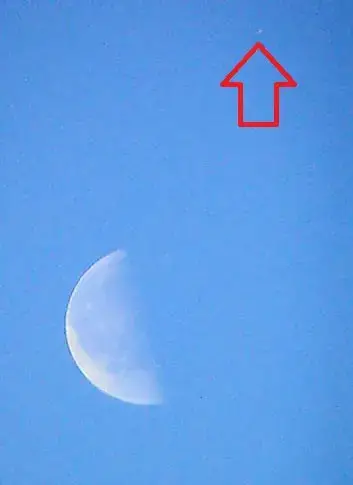
Jupiter, (arrowed) visible in the daytime near the Moon. Credit: Dave Dickinson
Jupiter is 5.8 Astronomical Units (AU) distant during the occultation, and will ingress (pass behind) the bright limb of the waning Moon, taking just over a minute to disappear before reappearing along the dark nighttime edge. The International Occultation Timing Association (IOTA) has precise times, for selected locations.
…And A Rare Double-Transit
To be sure, the Moon occults several planets worldwide per year. But what makes this one so odd is that two of Jupiter’s major moons Io and Europa are casting shadows on the Jovian cloud-tops while the occultation is underway (!) This strange view is revealed during egress, and runs out until 12:56 Universal Time (UT) when Europa’s shadow slips past Jupiter.
It’s tough to tell just how rare this is, but of the 231 lunar occultations of Jupiter in the 21st century, I’d bet that none feature a double shadow transit. These tend to happen in brief seasons, as the inner moons Io, Europa, and Ganymede are in a 4:2:1 resonance.
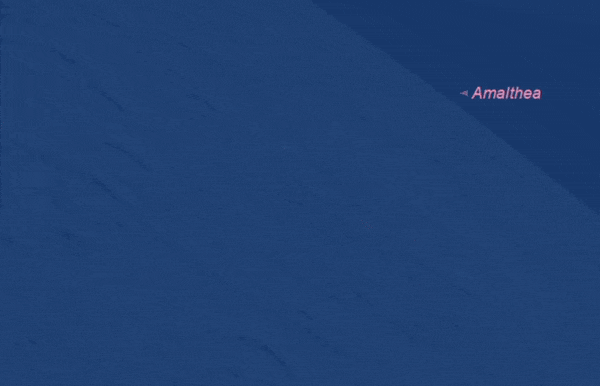
An animation (sped up 30x) of the double shadow transit during egress. Credit: Starry Night
Views in Time and Space
Stranger still is to consider what you would see perched on the Jovian cloud tops, as the Moon transits in front of the Earth… during a solar eclipse:
Though it’s often said that Earth is the only place that experiences near-perfect solar eclipses owing to the apparent size of the Moon versus the Sun, the Jovian system experiences nearly the same situation from the surface of its major moons during mutual eclipse-transit season, though totality is faster, only a few dozen seconds long. The next mutual eclipse season occurs in 2026.
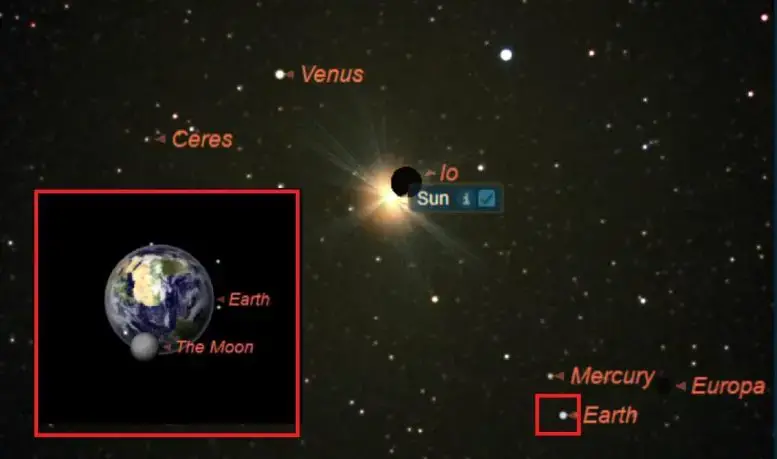
The view from Jupiter in the shadow of Io, on May 17th. Credit: Starry Night
The next cycle of occultations of Jupiter by the Moon begins on September 8th, 2026.
We’ll note if anyone happens to be carrying the occultation live, and if any images turn up. Right now, weather prospects for Wednesday look to favor most of the western U.S. with clear skies.
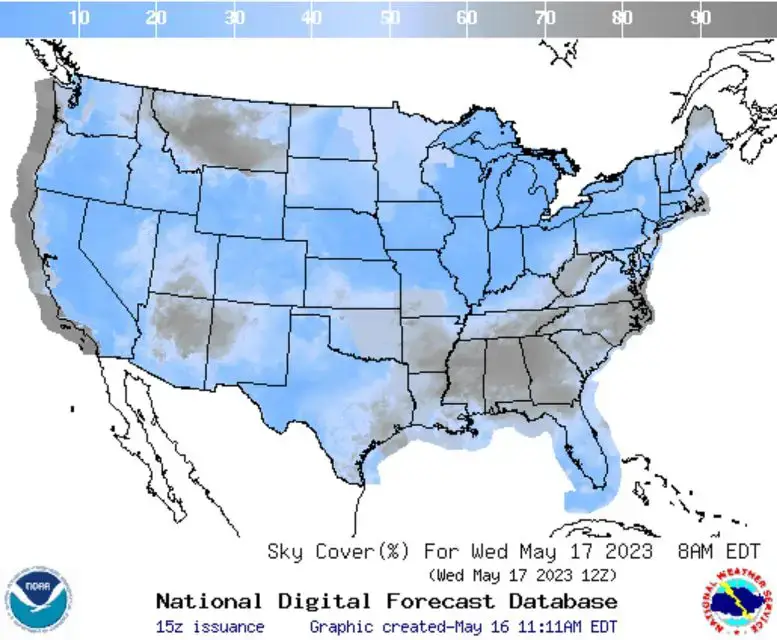
Weather prospects across CONUS for the morning of May 17th. Credit: NOAA
Don’t miss Wednesday morning’s rare lunar occultation of Jupiter, as another example of the fantastical clockwork Universe we share together.
Adapted from an article originally published on Universe Today.








